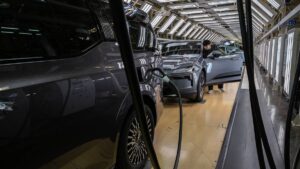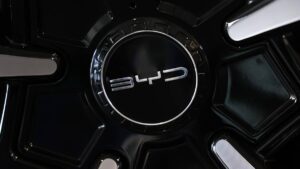Could Australia shake off its ‘automotive Third World’ tag after the BHP-Woodside deal?

Picture: Getty Images
As far as as electric vehicles (EV) go, Australia is at risk of becoming an “automotive Third World.”
Those were the exact words coming out of a Volkswagen representative.
Speaking to CarAdvice, the VW spokesman said, “Australia’s regulatory backwardness makes it almost impossible to make a case to the factories for prioritisation. As the Volkswagen Group has frequently made clear, Australia is becoming an automotive Third World.”
Funnily, or sadly, that might not be too inaccurate.
If we compare our EV sales to the rest of the developed world, Australia’s position does seem to be falling behind significantly.
EV cars in the Australia account for just 0.70% of all new car sales in 2020.
That compares to world leaders Norway, Iceland and Sweden – where EV sales account for 75%, 45% and 32% respectively in 2020. In China, that figure was 6%, and in the US, it’s 2% – but those two countries are coming off a much bigger base than Australia.
Part of the reason for Australia’s ‘backwardness’ is to do with the government’s unwillingness to damage our fossils fuel and carbon industries.
But BHP’s (ASX:BHP) announcement yesterday to move focus from fossil to green metals could be the turning point for the government to finally embrace the EV revolution.
So what does Australia need to do moving forward?
Stockhead spoke to Bell Resources founder and CEO, Mark Avery, to get his thoughts on this matter.
Bell Resources is an unlisted company with plans to float on the ASX. The company is positioning itself along the EV supply chain, with focuses on electric vehicle charging, renewable energy and lithium-ion batteries (LIB) in both Australia and the US markets.
Avery said that in order for the EV industry to bloom in the country, the Morrison government needs to provide a stronger message.
“If the Australian government can give out a firmer message on decarbonisation and provide assurances around that, the funding of infrastructure for the industry will go straight up,” Avery told Stockhead.
He believes the government could even leave the funding to the private sector, as long as they provide a policy framework that’s going to support the industry.
Australia as a battery production house
There’s no doubt the next 10 to 15 years will see more changes in the automotive industry than we’ve seen in the previous 100 years.
But what would be Australia’s role in this dynamic shift?
It’s clear that Australian lithium miners will play an important part in the world’s battery supply chain as we face an expected battery shortage over the next 10 years.
But the challenge facing the industry is more than just mining more metals, it’s also about recycling and building the recharging infrastructure.
According to the CSIRO, the cost for not recycling LIBs back to the economy is estimated to be around $603 million to $3.1 billion per year.
Meanwhile, building the necessary charging infrastructure is something that Bell Resources is currently focusing on.
“We’ve thought about how to shake this up, so we looked at the car washing business as a platform in which to push the EV charging stations. There is a synergetic opportunity in putting EV charging stations at these businesses,” Avery said.
And this model can be taken to the next level according to Avery, by putting solar panels on the rooftops and batteries on site.
“Whilst the solar won’t produce enough to charge up the vehicles 100%, it will allow us to offer dynamic pricing at sites. So the dynamic pricing model means that we can fluctuate that price around depending on the amount of battery capacity stored at the sites.”
Bell Resources plans to generate initial cashflows by rolling out this plan in both Australia and the US, with the eventual aim of raising around $155 million in an IPO to fund future lithium mining projects.
How about Australia also becoming a manufacturing hub for LIBs?
According to the latest Future Battery Industries report, Australia needs to look beyond its historic role of being a supplier of raw materials, and start adding value with downstream manufacturing in order to truly seize the opportunities in EVs.
We’re slowly getting there.
In July, the country’s first LIB manufacturer, Energy Rennaisance, received a $0.5m grant to develop its pilot manufacturing facility in the Hunter region.
The facility is set to produce 5.3GWh per annum, as it aims to become a leading LIB supplier for both Australia and the Asian markets.
Avery believes that Australia does have the technology to scale up battery manufacturing, and the market is potentially huge as it won’t be limited to just cars.
“We can create batteries for all sorts of things like trucks, semi-trailers, boats and even aviation,” he said.
But it all comes back to government policies.
“This moment is a once-in-a-generation shift for the whole market segment. So the government really needs to get on board with seeing the opportunities for Australia to become a global production house.”
“And when you have a big company like BHP saying they want to focus on this industry, that’s a key sign that it’s about to boom.”
Related Topics
UNLOCK INSIGHTS
Discover the untold stories of emerging ASX stocks.
Daily news and expert analysis, it's free to subscribe.
By proceeding, you confirm you understand that we handle personal information in accordance with our Privacy Policy.








